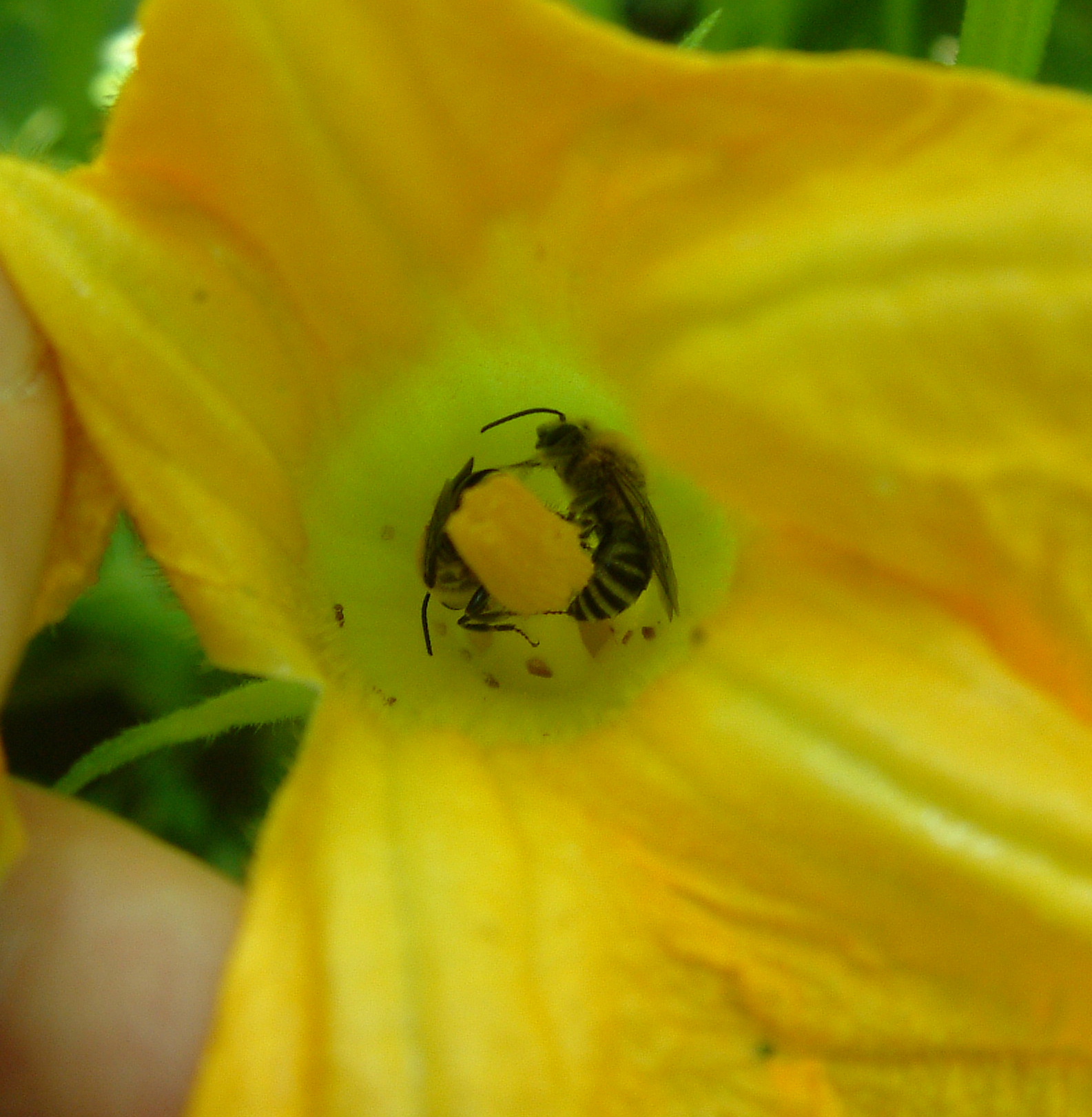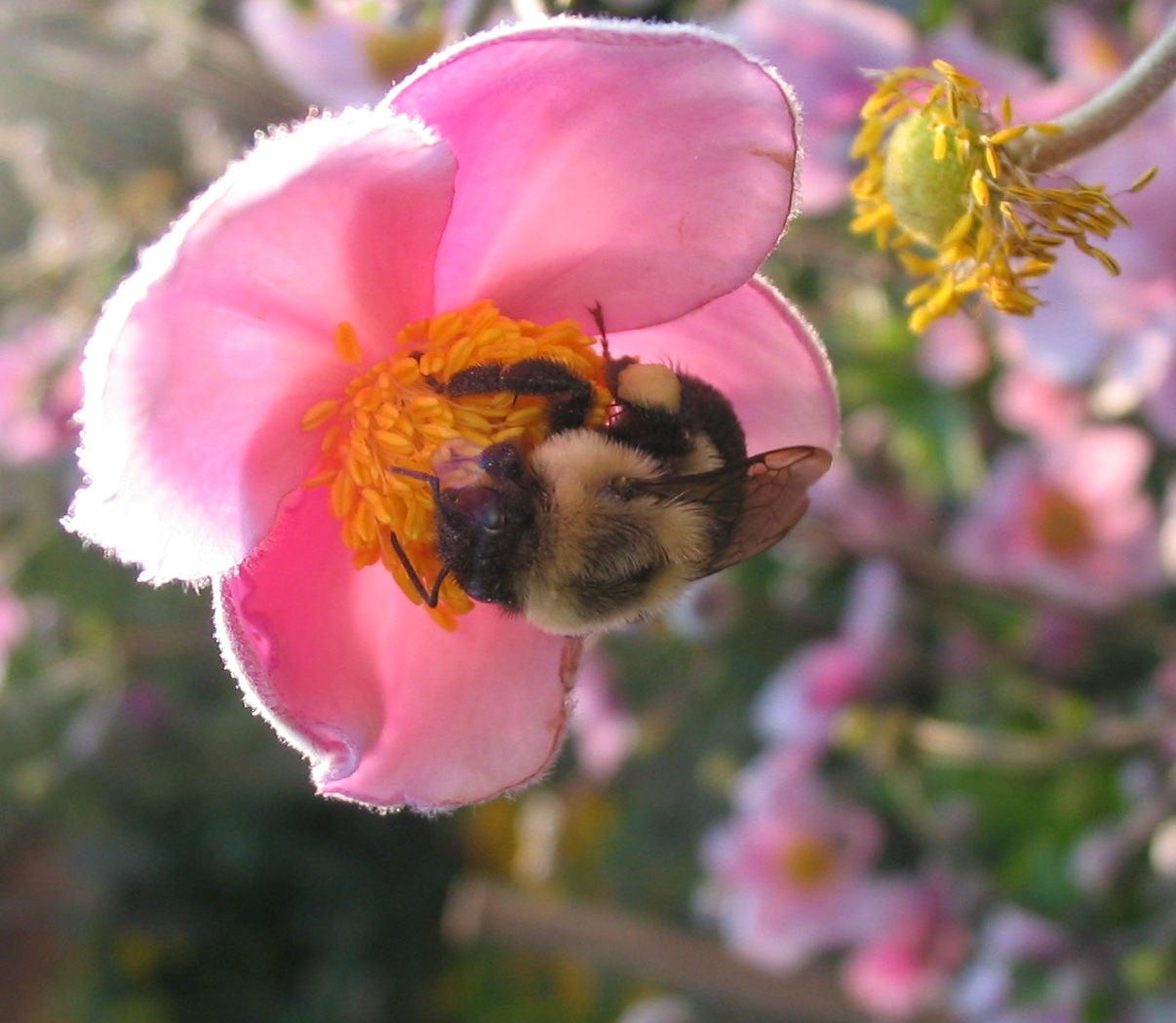
Pollinator Patch - Wild Bees for Food Crops
Since I started working for Pollination Canada, one of the many things that surprised me was learning that honeybees are not native to North America. Their proper name, the European honeybee, gives it away. It turns out that these beloved bees sailed across the ocean almost 400 years ago, courtesy of the colonists who landed in Jamestown, Virginia. Since then, honeybees have endeared themselves to us, sharing their sweet honey for our gustatory pleasures, their beeswax for warm candlelight, and helping to pollinate various plants.
The native squash

One more example of a native pollinator is the Blue Orchard Mason bee (pictured at top) – so called because they line their nests with a leaves mixed with a mud mortar. Just a few hundred of these bees can pollinate the same acre of orchard fruit as 20-30,000 honeybees. A recent study of almond orchards discovered that honeybees prefer to visit the top blossoms of the trees, while native bees often pollinate the lower ones.
None of this is to malign the dear honeybee, but simply to underscore the important roles required from the collaboration of a number of different bee species to accomplish the myriad of pollination services. Biodiversity is a term which refers to the variety of all living things, including plants and animals and their relationships. It includes the genes these organisms contain, and the ecosystems they form. The more biologically diverse a system is, the more resilient it will tend to be. From the above examples, you can see that bees have evolved to fill all kinds of niches – they are designed and adapted for different flower morphologies, pollen preferences, foraging temperatures and distances or even times of day.
The widely-reported disappearance of honeybees, called colony collapse disorder (CCD), brought public attention to the issues facing both the honeybee industry and declines in our own native wild bees. What was unknown was the impact of declines in wild bees on crop yields. No one had measured it until recently. In February of this year, a report was published in the journal Science, entitled Wild Pollinators Enhance Fruit Set of Crops Regardless of Honey Bee Abundance. The results demonstrate that honeybees neither maximize pollination nor fully replace the contributions that diverse, native bees make to produce food crops. Such conclusions hold especially for fields which have been routinely stocked with honeybee hives, such as almonds, apples, and blueberry. The study supports the notion that an increased diversity of pollinators increases crop yields.
The results of this report support integrated management policies which include both native and managed bees and this plays beautifully into the hands of a program that already exists in North America called Bee Friendly Farming® (BFF). Farmers and gardeners can self-certify to indicate the use of agricultural practices that encourage and improve pollinator health. Bee Friendly Farmers allow at least 6% of their total acreage to provide clean water, nesting sites, and natural forage for native bees through a variety of habitat features.
Grandma was right: variety is the spice of life.
~Kim Fellows, Pollination Canada
References and further resources
Sue Chan’s Recommendations for Conservation of Pollinators on Farmland and A Landowner's Guide to Conserving Native Pollinators in Ontario
Best Management Practices for Pollination in Ontario Crops (relevant beyond Ontario)
NAPPC Agricultural Task Force: Farmer Profiles and Resources
Lucas A. Garibaldi, et al. AM. 2013. Wild Pollinators Enhance Fruit Set of Crops Regardless of Honey Bee Abundance. Science (DOI:10.1126/science.1230200).
Claire Brittain, C. Kremen, A.-M. Klein. Biodiversity buffers pollination from changes in environmental conditions. 2013. Global Change Biology 19 (2): 540. DOI: 10.1111/gcb.12043
Loss of Wild Pollinators Serious Threat to Crop Yields, Study Finds. Damian Carrington. March 1st 2013. The Guardian.
Wild Pollinators Increase Crop Fruit Set Regardless of Honey Bees. March 1st 2013. EurekAlert.